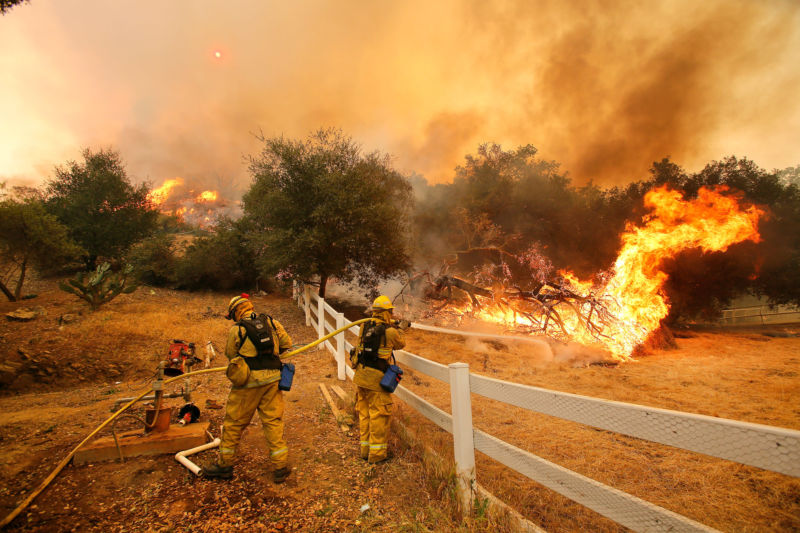
The last few years have seen horrific fire seasons in California, resulting in destruction, deaths, and economic damage. And with climate change continuing unabated, things are set to get worse.
Prevention is better than firefighting; avoiding carelessness is one way to reduce the huge number of human-caused wildfires. But a paper in PNAS this week reports a new option for wildfire prevention: a fire retardant-carrying gel that coats vegetation in a thin film, keeping that vegetation safe from fire long enough to see it through fire season. If it is demonstrated to be safe, it could allow us to spray high-risk areas at the start of fire season and keep protection through until heavy rains start.
Short-term retardants
Wildfire plays an important ecological role, but human activities make the natural fire season much worse—hot dry weather has tripled the length of the season, while humans cause 85 percent of fires. None of the fire retardants available at the moment last for very long. Some of them can stop a fire only as long as they're wet. Once the water in these gels has evaporated (which can happen in less than an hour thanks to the heat of a wildfire), they're no longer effective.
Other retardants can still work after they've dried, but they don't stick well on vegetation for long periods of time. The most common retardants in this category use ammonium polyphosphate as the retardant, mixed into a formulation called PC that distributes it.
Because of this, fire retardants are currently only really used to respond to emergencies. They can be used to slow the spread of a fire or protect a house in the path of a fire, but they can't be used to protect a high-risk zone for a long period of time.
A stickier gel
Stanford materials scientist Anthony Yu and his colleagues wanted to figure out a way to get a retardant to stick to vegetation long enough to make it through California's fire season. They used nontoxic substances that are used in food and agricultural products—silica and cellulose—to make a carrier for a fire retardant that's already used in current formulations. The new gel makes the retardant stick to the vegetation for longer periods of time.
To figure out what would be most effective, they made a range of different gel formulations and tested them out on grass. Compared to PC, the current option, their new gels coated the test grass more thoroughly and stuck to it better.
Yu and his team also oven-dried the grass and sprayed it with water to see whether their formulations would stick it out through weathering. This allowed them to identify a formulation that was particularly effective at hanging on even through rainfall. Obviously, if you want to spray something on vegetation and leave it, you want to be sure that it's not going to be toxic. They tested it on human skin cells and found no effects compared to a control condition.
Set it on fire
Next, Yu and his colleagues tested their formulations out in some fire experiments. They coated some clumps of grass with their retardant formulas, sprayed different samples with lighter or heavier fake rain, and then set it on fire to see how well the flames spread. A frontrunner broke through: one of their formulations lasted even through the heavier "rain," resulting in basically no fire at all. The team found similar results in tests using wood instead of grass.
The gel's longevity means that it could be sprayed at the start of wildfire season, and last long enough to offer protection until the first heavy rainfall. Once the heavy rain starts, wildfire risk starts dropping anyway.
The gel can be distributed using standard pumping equipment, so it should be quite easy to apply. And it wouldn't need to be sprayed everywhere: human-caused fires often start in high-risk places like roadsides. So, reducing wildfires wouldn't mean coating everything in retardant—focusing just on the high-risk zones would make a big difference.
Obviously, there's more testing needed before this option can be widely used, but this could be a beacon for a world facing ever more extreme wildfires.
PNAS, 2018. DOI: doi.org/10.1073/pnas.1907855116 (About DOIs).
https://arstechnica.com/science/2019/10/new-gel-lets-us-spread-flame-retardant-before-wildfires-start/Bagikan Berita Ini














0 Response to "New gel lets us spread flame retardant before wildfires start - Ars Technica"
Post a Comment